Catcher Drills - Developing Strategies
What does Catcher Drills have to do with the game of chess? The game of chess can be traced back to Medieval times and probably before and was thought to originate through generals and kings plotting battle strategy against their opponents.
It was a strategic game which taught the players the art of deception, misdirection, anticipation and surprise which attacked their opponents' weaknesses.
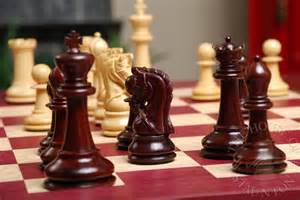
Strategy Lesson
Now the game of baseball wasn’t invented until the 1800s a bit later than the game of chess, but the Human aspects of the game, the strategy, plotting and mind games sound strangely familiar to the cat and mouse game played between the catcher and batter every “at bat” experience.
People tend to think the battle of wits, of who can out think or out guess the other is between the pitcher and batter, but they fail to realize it’s the Catcher who calls the type and location of the pitches. The catcher is the general moving the pieces (pitches) around in order to defeat (strike out) the opponent (batter).
We’ve discussed pre-season and pre-game strategy of a catcher, now it’s time for the real thing…play ball.
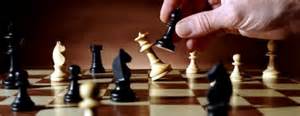
Catcher Drills - Careful Moves
Developing strategy tools will take a little time, but once these skills are developed you will perform them as unconsciously as breathing. If you fall onto your back and knock the breath out of yourself, you consciously and deliberately attempt to being breathing again, which depending on the fall, may seem like it’s never going to happen again, but it does.
It’ll be the same way with strategy skills, you’ll consciously and deliberately realize what you’re doing at first, but after awhile you’ll perform 20 strategic moves in your head in a matter of seconds and won’t even realize it. It’ll be as if a light bulb suddenly came on, but in reality it was the result of analyzing the situation.
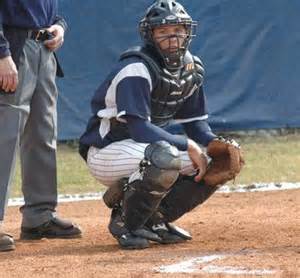
Catcher Drills - Checking Dugout
As the catcher you are the closes thing to a major league manager on the team, not including the coach, assuming he’s good, if not exclude him too. You must analyze the situation and factor in the percentages, just as a MLB manager brings in a left handed pitcher to face a left handed hitter, when making your pitch selection.
Let’s pause for a moment. I told you earlier learning the catching position is the most difficult and demanding position, physically and especially mentally, on the team. That’s why a Great Catcher who handles the pitching staff well, stays in major leagues although he’s only hitting .235. The team can always go out and buy a big bat hitter, but not so for a good catcher. So don’t get overwhelmed with the amount of things you must learn…it’ll come.
Catcher Drills-
You begin your mental strategy and memory banks going as the first hitter approaches the batters box. More than likely the hitter will be confident, or else he wouldn’t be the lead off hitter, so you assume he can hit.
But how is he built? Is he tall and lanky, which indicates he may have a lot of pop in his bat, a player with that type of build can be deceiving strong, or is he average height but skinny, which indicates a lot of speed and a contact hitter.
You begin to see how the strategy process works. You have already filed a mental note about the anticipated strengths and weaknesses of the hitter and he hasn’t even entered the batters box yet.
Of course you will not always analyze the hitter correctly, but that’s alright. If you are correct about your assumptions, that’ll stick in your mind for the next time he bats. If you’re not correct, those results will also be retained and you’ll pitch him differently next time.
Possibly surprising, is the usage of assumptions and playing the percentages of a hitter’s ability actually applies more consistently at the younger level baseball, because in minor league or higher, the players are there because they defied the percentages.
This ability to assess a hitter and immediately form a pitching strategy increases the team’s chances of winning, many fold.
The adage Good Pitching beats Good Hitting is more or less true, but it’s not quite accurate as it assumes too much. Good pitching could be described as the ability for the pitcher to have an over powering 98 mph fastball, but if it can’t be thrown for a strike, it’s useless.
I realize it’s schematics, but I prefer A Good Pitcher being caught by a Good Catcher will beat good Hitting. A pitcher with an overpowering fastball, grooving it every pitch, will get his brains beat out, because traditionally hitters will eventually catch up with it in the later innings.
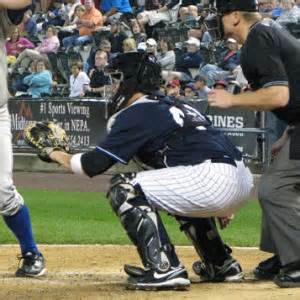
Catcher Drills - Working With the Ump
It’s your responsibility to learn your umpire’s strike zone as quickly as possible and hope it does not change, but if does…. Adapt. ---- Catcher Drills
The reason it’s your job to figure the strike zone out and not the pitcher is simply because the pitcher will throw to your target. Set up outside the strike zone and no matter how pin point accurate the pitcher is, he’ll continually throw balls, just that simple.
Knowing and understanding the umpire’s strike zone you now have the ability to set up and get a first pitch called strike, immediately giving your pitcher the advantage of pitching ahead in the strike count. As you grow older and precision pitching becomes more valuable, this ability to get a first pitch strike will make you worth your weight in gold to the pitchers.
Let’s review a hypothetical batting scenario and exam how we can quickly develop a strategy which will work.
It’s the second inning and you have already, or you better have, figured out the umpire’s strike zone. You assume he may have been a pitcher in his playing days because he gives the pitcher strikes on low pitches and the outside black of the plate, but not the inside. Exactly the way a pitcher likes to pitch with the exception of also wanting the inside corner, but let’s not be piggish.
Your first call will be a fastball low and away. As the pitcher begins his wind up, shift your weight to the outside portion of the plate, which will place your upper body at a slight angle to the outside and move your target to the outside corner.
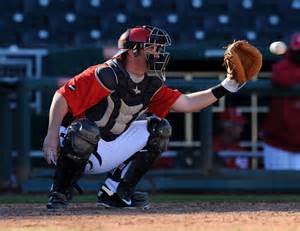
Catcher Drills - Framing the Pitch
It’s important to not stand up to move your body and target. Standing distracts the umpire, as he may have to re-position his body, which moves his head, which an umpire does Not like to do, in order to move where he can look over your head.
Chances are if you stand up to move the umpire will not adjust to your move and you have blocked his view from the outside part of the plate, which is exactly the opposite of what you want.
Even if the umpire can see the plate or moves with you, you have forfeited the advantage of instilling the thought process of …you set up low and away …and your pitcher hit the target without requiring you to move your mitt.
It’s very important to instill this mindset in the umpire and limiting your movements to small quick adjustments, coupled with properly framing the pitch, and his inclination to call that pitch a strike, will get you a strike call 95% of the time.
Catcher Drills Back to Baseball Skill Drills

New! Comments
Have your say about what you just read! Leave me a comment in the box below.